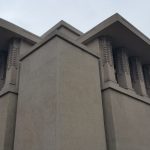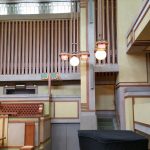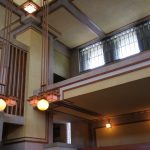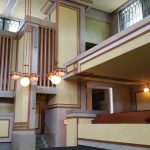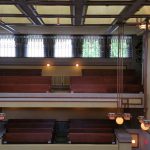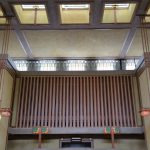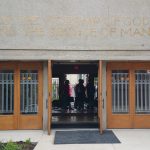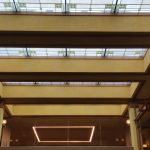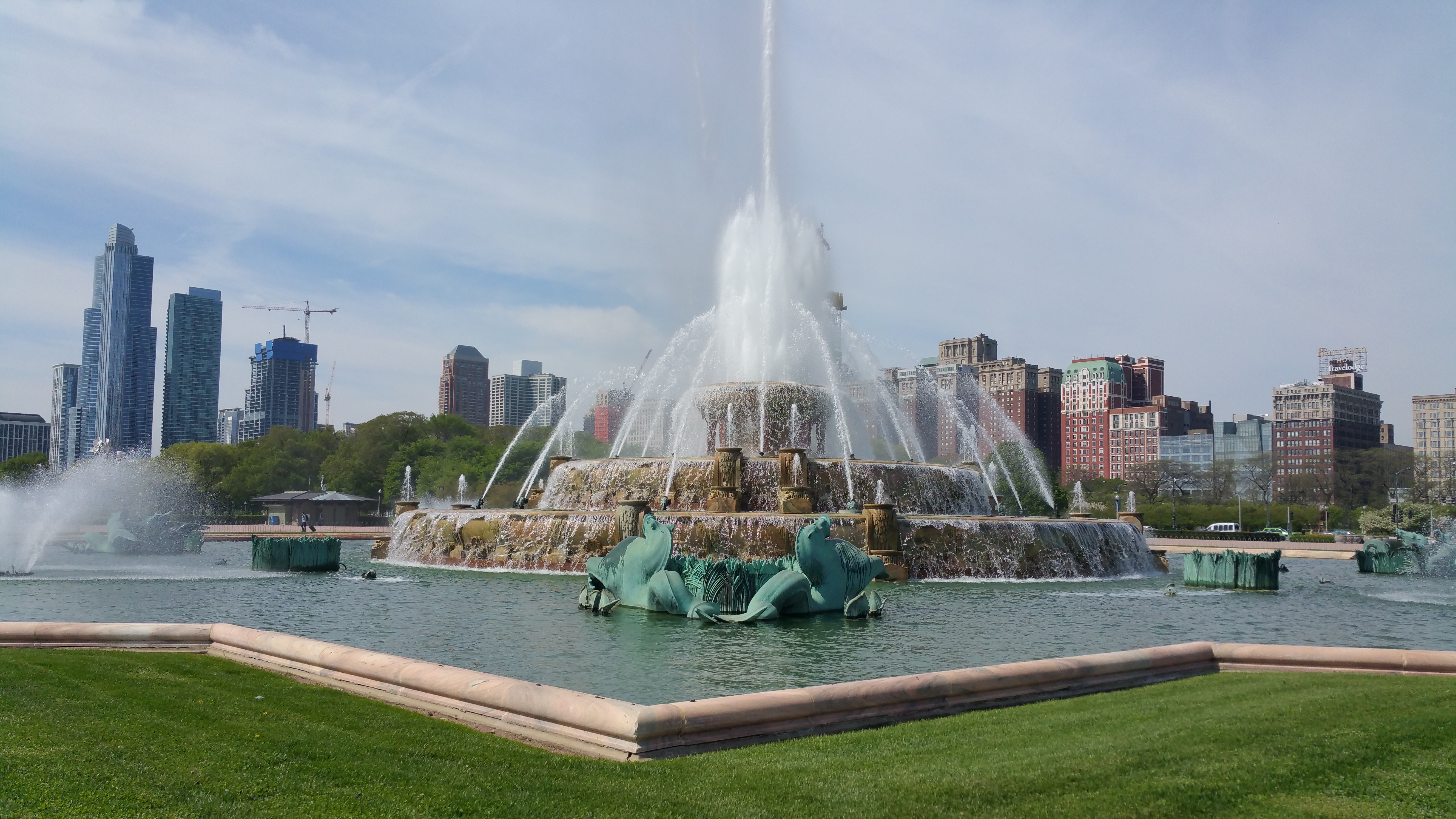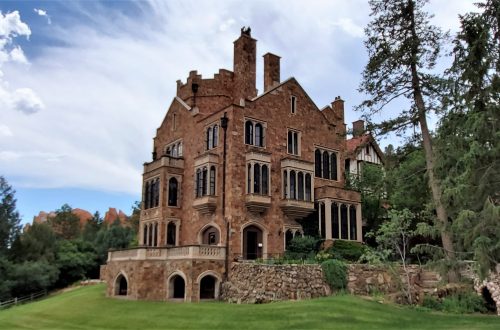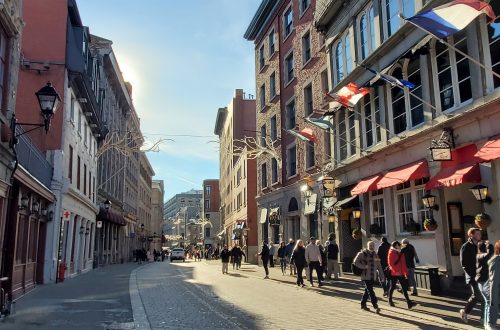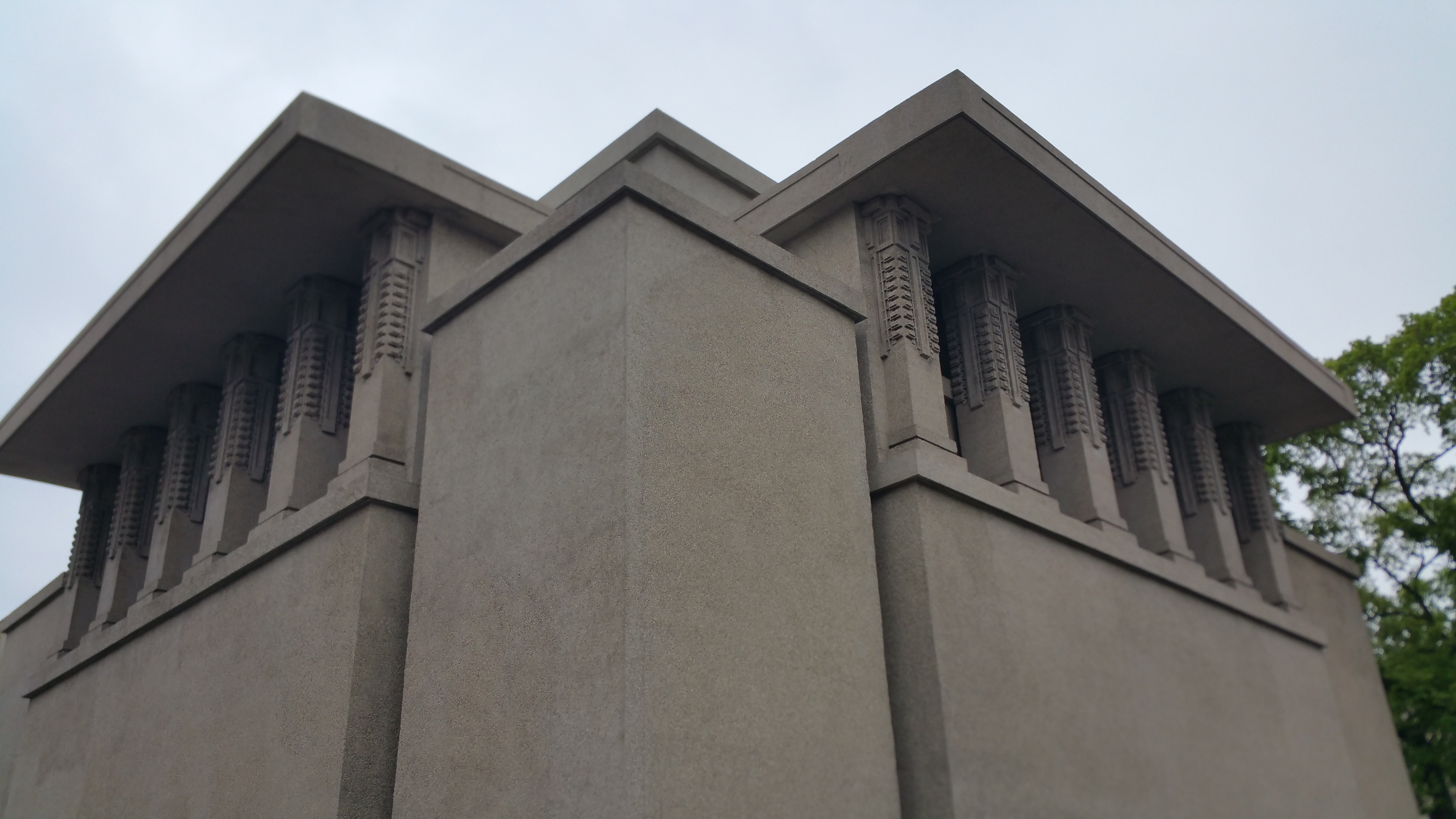
Unity Temple- Oak Park, IL
Frank Lloyd Wright designed a ridiculous number of now iconic buildings. Though mostly known for his houses, both fancy and utilitarian, he did also build hotels, skyscrapers, and churches. Sadly, many of these public buildings are gone. However, one of his first and most influential public structures still stands in Oak Park, Illinois- Unity Temple. So unique and bold was its design, it’s considered by many to be the first modern building in the world.
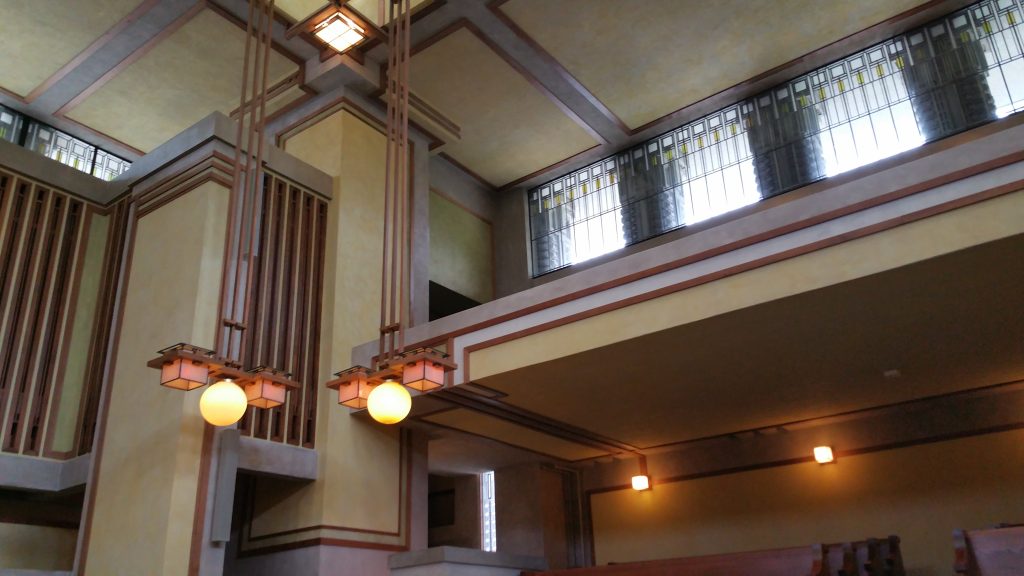
After the original, and certainly more traditional, Oak Park Unitarian Universalist church was destroyed by lightning in 1905, fellow Unitarian and Oak Park resident Frank Lloyd Wright was retained to design a new structure for the congregation. Working with a strict budget of $45,000, and an oddly shaped lot, his options were limited. Fortunately, his imagination was not; he proposed to construct the building using reinforced concrete. Concrete was certainly cheap and kept with Wright’s organic design aesthetic.
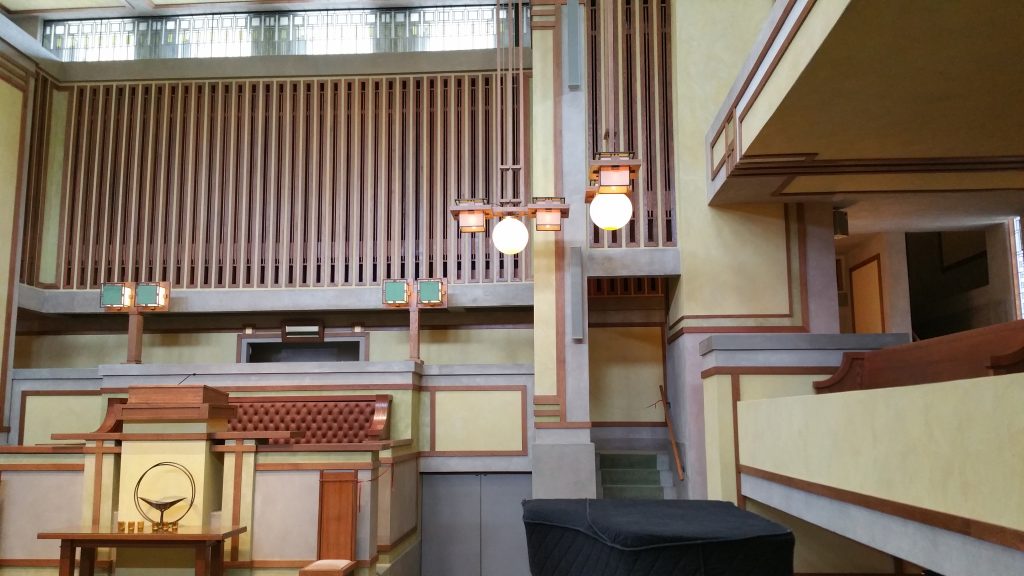
Tasked with building two discrete spaces, Wright designed a four story cubic sanctuary for worship, as well as a large community room for social events, connected by a one story loggia. Above the loggia entrance, brass letters announce the duel purpose of the space, worship and service.
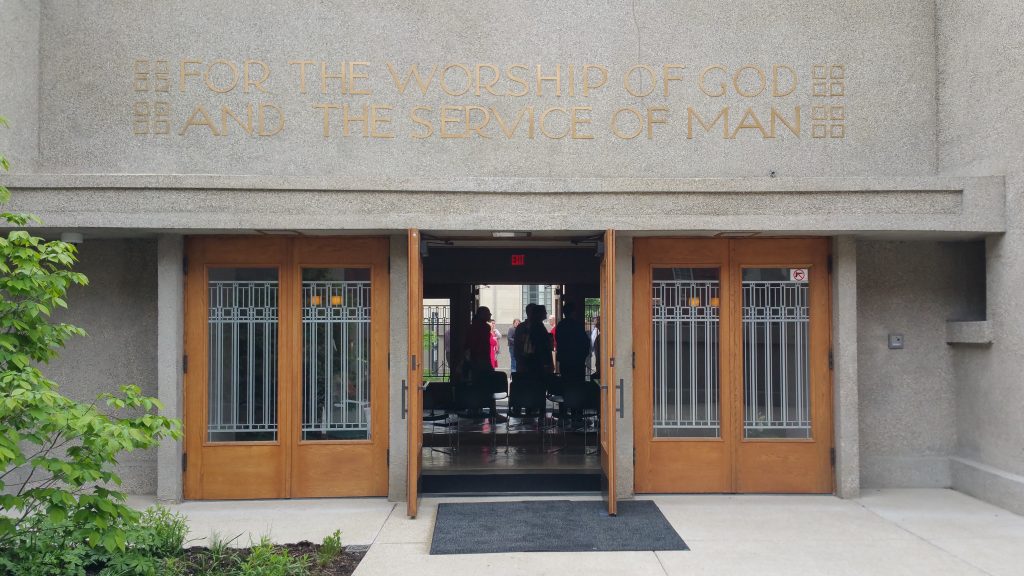
For the church, entry is through a series of low, dark passages, which open into the sanctuary itself. A continuous band of leaded clerestory windows encircle the flat, coffered ceiling, which boasts twenty five square amber leaded glass skylights set in a concrete grid. Two balconies increase the church’s seating capacity, while still ensuring no one is more than 40 feet from the pulpit. The space is an absolute symphony of geometric shapes.
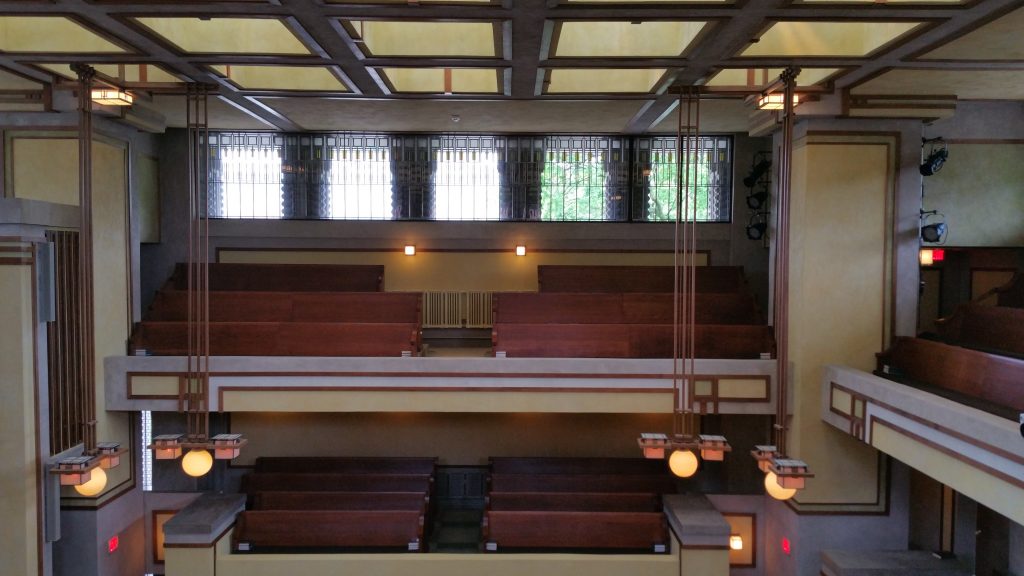
Opposite the sanctuary, through the low slung loggia, is the community hall. Featuring a wide hearth, high ceilings and art glass skylights, it is a soaring open space designed to host social activities. Two distinct spaces, with separate functions, united by similar design details.
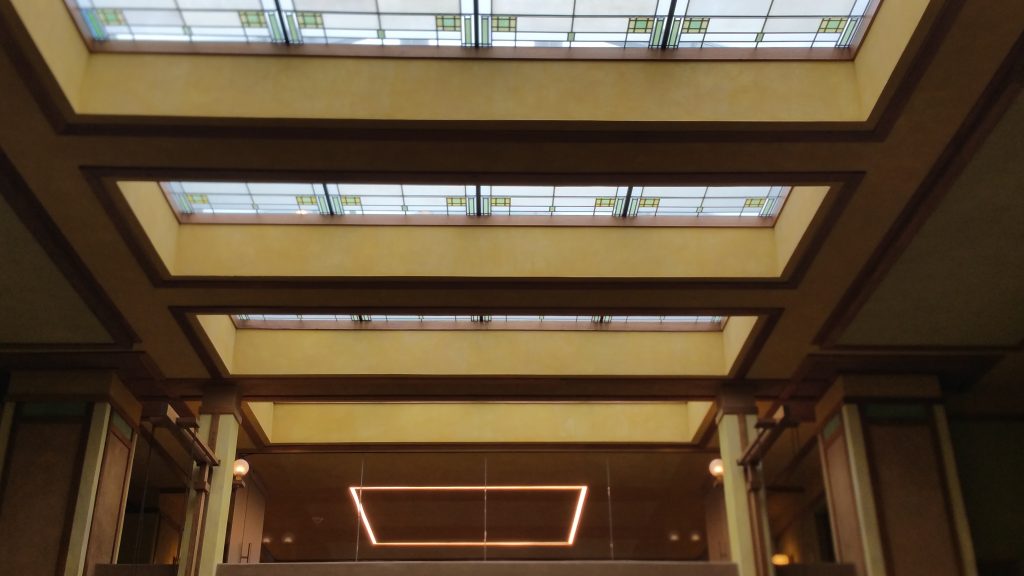
In typical Wright fashion, the completed building was 50% over budget, and took far longer than the congregation would have liked. These things tend to happen when using innovative and untested building techniques. Nevertheless, everyone was pleased when it was finally completed in 1908. Unfortunately, over the past century, the harsh Chicago climate took a toll on Wright’s work. The concrete began to crumble, and water seeped in through the flat roof. In fact, the situation was so dire, the property was added to the National Trust for Historic Preservation’s list of of 11 most endangered places in 2009.
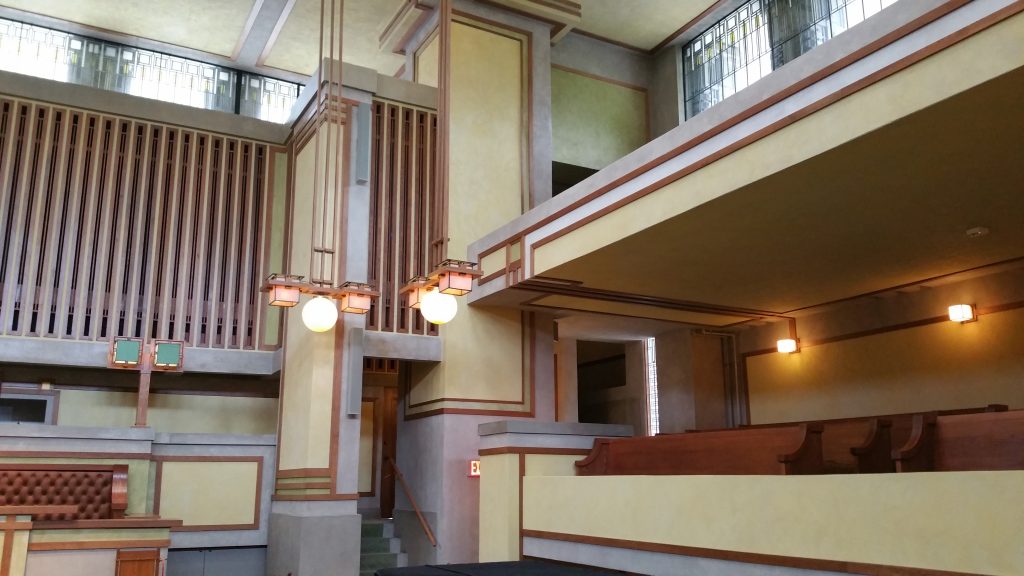
Fortunately, funding was found, and in 2015 the property underwent a two year, $25 million restoration. The roof was fixed, the skylights restored, and layers of paint stripped from the sanctuary walls. Outside, the concrete was repaired, and previous shotcrete patchwork removed. The hands of time have been effectively turned back to 1908, and the Unity Temple once again shines.
